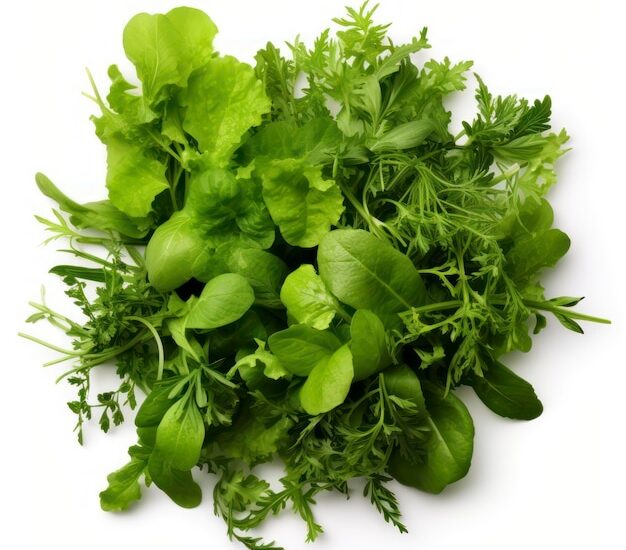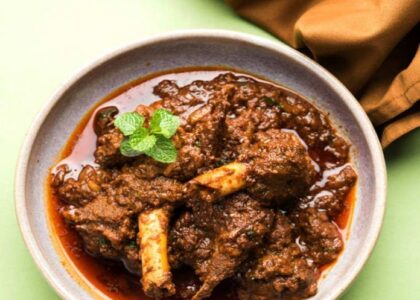Assam, the lush, green state located in the northeastern part of India, is renowned for its rich culture, diverse traditions, and vibrant culinary heritage. One of the key aspects of Assamese cuisine and traditional medicine is the use of unique herbs that are not widely known outside the region. These herbs, which have been used for centuries in local households, are packed with medicinal properties and are often integral to Assamese recipes and natural remedies. In this blog, we’ll explore some of the fascinating herbs used in Assam that other parts of India may not be familiar with.
1. Morapaat (Jute Leaves)
Morapaat, also known as jute leaves, is a common yet underappreciated herb in Assam. These bitter leaves come from an edible variety of jute called titamora and are commonly used in Assamese dishes like morapaat aru masoor khar (a fish dish) and morapaat gahori bhaji (pork with jute leaves). Despite their bitter taste, Morapaat is packed with nutrients such as Omega-3 fatty acids, vitamins, and minerals that are great for reducing inflammation, boosting immunity, and improving digestion.
In Assamese traditional medicine, Morapaat is also known for its detoxifying properties, helping cleanse the digestive system and improve skin health.
2. Bhoot Jolokia (Ghost Pepper)
While Bhoot Jolokia or ghost pepper is slowly gaining recognition across India, its roots remain firmly planted in Assam and its neighboring regions. Known for its intense heat, this pepper is one of the hottest in the world, often used in Assamese cuisine to spice up dishes like chutneys, curries, and pickles.
Beyond its fiery flavor, Bhoot Jolokia is believed to have medicinal benefits, including boosting metabolism, improving digestion, and even acting as a pain reliever due to its capsaicin content. In Assam, this pepper is also used in folk remedies for treating ailments like arthritis and joint pain.
3. Kachur Loti (Zingiber zerumbet)
Kachur Loti, a variety of ginger, is widely used in Assamese cooking but is relatively unknown in other parts of India. Unlike regular ginger, Kachur Loti has a stronger, more intense aroma and a distinct flavor that adds depth to traditional Assamese dishes. It’s typically used in fish stews, curries, and chutneys to impart a bold, earthy taste.
Medicinally, Kachur Loti is believed to have powerful anti-inflammatory and digestive properties. It is often used to treat stomach issues, nausea, and indigestion, making it a staple in many homes for both culinary and health purposes.
4. Nui (Nymphaea nouchali)
Nui, or the blue water lily, is a sacred herb in Assam, often found growing in ponds and marshes throughout the state. It holds religious significance in Assamese culture and is also believed to have therapeutic benefits. Nui is used in both Ayurvedic and folk medicine to treat a variety of ailments, including insomnia, anxiety, and skin infections.
The herb’s leaves, flowers, and roots are often used to make herbal infusions or decoctions that are believed to have calming effects on the nervous system. Nui is also used in Assamese beauty treatments for its skin-rejuvenating properties.
5. Satahva (Cinnamomum tamala)
Satahva, also known as the Indian bay leaf, is another herb that is widely used in Assamese kitchens but remains unfamiliar to many outside the region. Unlike the more commonly known bay leaf, Satahva has a stronger, more pungent aroma and is an essential ingredient in Assamese dishes, particularly in meat and fish curries.
Beyond its culinary uses, Satahva is believed to possess various medicinal qualities, such as aiding digestion, improving appetite, and promoting overall gastrointestinal health. It is also used in traditional remedies to treat colds and respiratory issues.
6. Kesarulota (Litchi Flower)
Kesarulota, the flower of the litchi tree, is a little-known herb used in Assamese traditional medicine. The flowers of this fruit are often gathered and used to prepare herbal teas or decoctions. They are believed to have cooling and soothing properties, making them an ideal remedy for fever, inflammation, and digestive issues.
The unique floral essence of Kesarulota is also used in Assamese cuisine to impart a subtle fragrance to desserts and sweets. It is sometimes used in beauty treatments for its skin-nourishing and anti-aging effects.
7. Kohuwa (Houttuynia cordata)
Kohuwa, also known as fish mint or Houttuynia cordata, is a herb that thrives in Assam’s humid climate. Known for its distinct, fish-like odor, Kohuwa is used in Assamese cuisine to add flavor to fish curries and stews. The leaves and stems of this plant are often added to dishes to infuse them with a unique taste that is both aromatic and slightly pungent.
In traditional medicine, Kohuwa is highly regarded for its detoxifying properties. It is believed to aid in liver function, cleanse the blood, and help with digestive issues like bloating and indigestion. It is also used to treat respiratory ailments and fevers.
8. Ritha (Soapnut)
Ritha, or soapnut, is another herb commonly used in Assam that remains less known in other parts of India. This herb is famous for its natural cleaning properties, as the fruit contains saponin, a natural surfactant that can lather in water and be used as a soap substitute.
In Assam, Ritha is used not only in household cleaning but also in personal care. It is commonly used in hair washes and body cleansers as a gentle, natural alternative to commercial products. Additionally, Ritha is believed to have skin-healing and anti-inflammatory properties.









